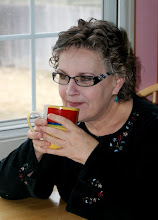THEY FELL! I had planned these cupcakes for a baby shower for someone very special. It doesn't matter how much planning goes into the tasties. It doesn't matter how carefully the special treats are prepared. It doesn't matter how experienced a baker is. Every once in a while, the very most important goodies, fail. For me, this is often cause for tears.
The plan was for chocolate cupcakes with blue frosting and birds nests on top. All of the cupcakes fell during baking. I had no more time to make more. I did cry. This was supposed to be such a beautiful presentation of a favorite dessert for one of my favorite people. As a last minute attempt at rescuing a dessert for a shower, I bought cupcakes, scraped the frosting off, put my own frosting on and the birds nests that were already made for the tops.
While I fretted over not having "real" cupcakes, my daughter filled the "wells" in the middle of the chocolate cupcakes with frosting. We decided that since they taste alright, they just look really funny, we would give said chocolate cupcakes to the honoree to take home. As it turned out, even the fallen cupcakes were yummy and devoured at the shower.
So, the moral of this story is that EVERYONE who bakes, will have something fail sometime. But, almost any disaster has a reasonable solution that will still leave everyone patting their tummy. So, never give up on baking just because something didn't work.

